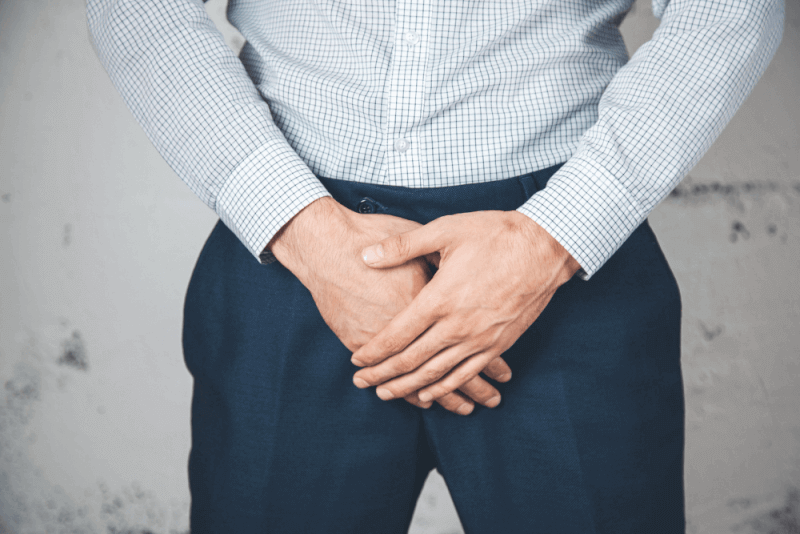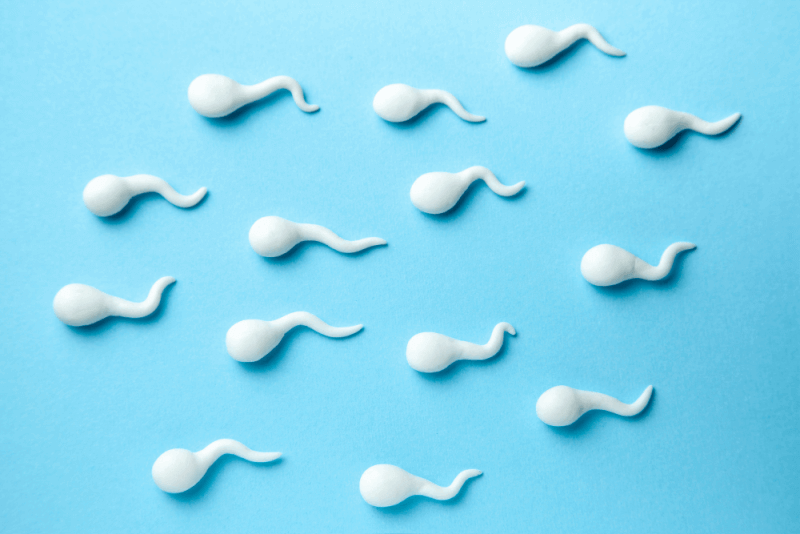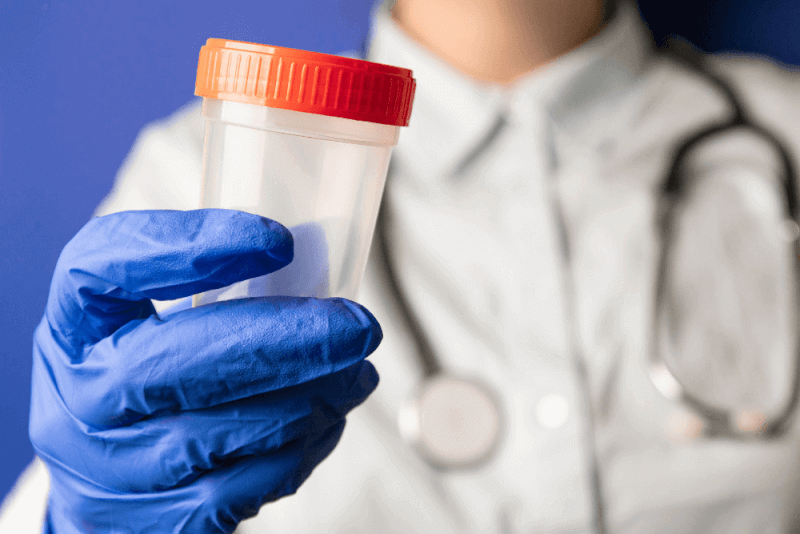What is Sand Passing?
A completely healthy person undergoing routine urine tests may learn that they have sand in their urine. Therefore, doctors refer to this condition as the presence of calcium and uric acid crystals—small solid particles excreted in the urine—often an asymptomatic condition. Normally, these should dissolve and be invisible under a microscope.
This condition indicates a high risk of kidney sand development. Urolithiasis represents the formation of stones in the kidneys, ureters, or bladder. To prevent such a scenario, it is essential to begin the prevention of urolithiasis (ICD) immediately.
Phytotherapy still plays a significant role in the treatment of the body. For example, plant components of Canephron N—plant flavonoids, essential oils, and organic acids—support the functioning of the kidneys and urinary tract. The unique phytoneer technology used in the production of the drug includes quality control at all stages: from creating your own seed combination to analyzing the content of active substances in tablets and drops. All this guarantees the clinical efficacy of the phytopreparation.
From the moment sand is detected in urine tests, you should consult a doctor and start receiving the necessary support. This prevents many pathological processes in the urinary system and often halts the stone formation process. Without treatment, kidney sand can lead to much more severe problems in the future.
Where in the Body Does Sand Passing Occur?
The condition commonly referred to as "sand passing" is essentially kidney stones smaller than 5 mm. Therefore, like kidney stones, sand also forms in the kidneys. When some salts and minerals, such as phosphate, cystine, and oxalate, form in the kidneys and do not dissolve in the urine, they harden. Due to these characteristics, sand passing is observed in the kidneys, urethra, bladder, and meatus.
Sand Passing During Pregnancy
Sand passing, which can also occur during normal times, is a condition that should be taken seriously during pregnancy because it can cause premature birth. Symptoms of sand passing and kidney stones during pregnancy include lower abdominal pain, a burning sensation while urinating, difficulty sitting in one position for long periods, fever, foul-smelling and cloudy urine, and bloody urine.
The primary cause of sand passing during pregnancy is insufficient water intake. Insufficient water consumption increases the concentration of phosphorus and calcium minerals in the body. Additionally, high calcium intake during pregnancy and urinary tract infection also contribute to the formation of sand in the kidneys.
If sand passing occurs during pregnancy, water intake should be increased first. In addition, one or two teaspoons of apple cider vinegar should be added to a glass of water and consumed twice a day. Adding some honey to the juice of half a lemon and consuming it daily helps eliminate toxins from the body and accelerates the passage of sand.
Sand Passing in Babies and Children
Like adults, babies and children can also experience sand passing. The problem is often detected in babies through pink or red stains or particles seen in their diapers.
Sand passing in babies is a very common problem and usually resolves on its own once the baby starts drinking water. Therefore, there is generally no need for significant concern. However, as sand passing poses a risk for kidney stones, an ultrasound examination should be conducted. If no stones are detected in the imaging, it should be repeated every 3 to 4 months until the child is 2 years old. If stones larger than 5-6 mm are detected in the ultrasound, intervention is necessary.
Causes of Sand Passing
Urine removes various minerals (e.g., calcium) and uric acid in dissolved salts. When these molecules lose their ability to dissolve, they precipitate—forming sand in the urine. The causes are as follows:
- Drinking hard water that contains high amounts of mineral salts
- Alcoholic products, including wines
- Use of sulfa drugs, antibiotics
- Eating too much protein
- Insufficient water intake, episodes of dehydration
- Kidney and urinary tract infections
- Issues related to the gastrointestinal system
- Certain hereditary fermentopathies
The list is not exhaustive; there can be many reasons for sand formation in the kidneys. For medical and preventive purposes, doctors prescribe complex treatment, including phytotherapy. One of the modern herbal preparations is Canephron N. The benefits of using this phytopreparation include improving the physicochemical properties of urine and normalizing its acidity. Its balanced composition makes urine slightly acidic, improving the dissolution of salt crystals (sand) and providing anti-inflammatory, antispasmodic, antioxidant, and mild diuretic effects. Therefore, the formed sand is easily expelled from the urinary tract.
Symptoms of Sand Passing
The initial stage of urolithiasis is characterized by a long asymptomatic period. A person may be unaware of kidney issues for years until they undergo a test.
Symptoms indicating sand in the kidneys appear when the process is complicated by an infection or when intense salt deposits begin to precipitate and are excreted in the urine.
In such cases, crystals scratch the walls of the ureter and urethra, causing pain and blood in the urine. The following are symptoms of sand in the kidneys that may prompt a doctor's visit:
- Lower back pain, often on one side;
- Mild prolonged fever;
- Burning sensation during urination;
- Red-colored urine due to the presence of blood.
If symptoms appear, you should consult a doctor and undergo tests to clarify the diagnosis. You can start taking some herbal supplements before visiting the doctor, as they will already have anti-inflammatory, antispasmodic, and mild diuretic effects. However, it is strongly recommended not to self-medicate until the details of the kidneys' condition are clarified.
Symptoms of Sand Passing in Urine
Sand or stones in the kidneys usually do not show any symptoms until they start to move. However, if the sand passes into the ureters, which connect the bladder to the kidneys, various complaints may arise. The symptoms seen in patients can vary depending on the degree of obstruction in the ureter. The most common symptoms of sand passing in urine include:
- If an infection has developed due to sand in the kidneys or urethra, patients may experience fever and chills.
- Sharp and severe cramping pain in the lower back and sides below the ribs
- Pain spreading to the lower abdomen and groin
- Nausea
- Vomiting
- A constant need to urinate
- Urinating less than usual
- Cloudy and foul-smelling urine
- Red, pink, or brown-colored urine
- Pain that comes in waves and varies in intensity
- A burning sensation while urinating
- Visible sand in the urine
Treatment Methods for Sand Passing
Before starting treatment for sand passing, it is necessary to determine the cause of sand formation in the kidneys. Then, initiating the most appropriate treatment based on the cause is essential. Otherwise, the sand crystals in the kidneys can grow, causing various injuries in the urinary tract and leading to an infection.
Medication Treatment
The primary treatment option for sand passing is medication. Different groups of drugs with varying effects and active ingredients are used in medication treatment. These drug groups include the following:
- Canephron N is a medication that can be used by patients over 12 years old. The dosage varies according to the doctor's recommendation but is usually taken three times a day in two doses. This medication helps the sand in the kidneys move faster and pass within a shorter period.
- Phytoneering is a natural option derived from natural sources. This option, which results from the balanced combination of essential oils, phthalates, and phenol carboxylic acids, also accelerates the therapeutic effect due to the combined speed enhancement of the components.
Although various herbal recommendations exist for removing sand from the kidneys, none offer a balanced formula like phytoneering, making their effects likely to be less than expected. Additionally, Canephron N is recommended for patients with both sand formation and infection in the kidneys.
If an infection is present alongside the sand in the kidneys, various antibiotics should also be included in the treatment.
Surgical Treatment
Surgical treatment methods are generally not needed for kidney sand, as the crystals are usually less than 3 mm. However, in severe cases where the sand does not pass, various surgical options are used. The most commonly preferred method is remote lithotripsy, which uses shock waves to break the crystals.
How is Sand Passing Diagnosed?
Identifying the sand grains and sediment in the urine is not enough; you also need to find the reason for their presence in the kidneys, not just in the bladder. This can be done using instrumental methods:
Ultrasound of the kidneys and urinary tract;
- Contrast urography;
- CT or MRI of the urinary system;
- Endoscopic technique - examining the urinary tract with a thin endoscope inserted through the urethra.
Ultrasound of the kidneys provides the most information: on it, sand appears as a suspension or sediment in the kidney cavity. If the grains are smaller than 4 mm, they are considered sand particles, while those larger than 0.4 cm are classified as microliths.
Additional diagnostic methods for sand in the kidneys, such as CT, blood tests, urine cultures, urography, or endoscopy, are indicated to clarify the cause of salt accumulation (anatomical features, infection) and the extent of stone formation.
Is it worth taking Canephron N at the diagnostic stage? It's better to consult a doctor first. The improvement of the condition due to the herbal components of the drug may blur the disease picture, making it less noticeable.
How to Prevent Sand Passing?
Relapses of sand in the kidneys are very common. Certain types of stones, in particular, have a 65% chance of reappearing after full treatment. This is because people often consume unhealthy water in their place of residence. It is difficult to give up bad habits, and it is impossible to correct hereditary fermentopathy, etc.
However, the contraindications for sand in the kidneys are precisely about excluding the causes of stone formation: drink plenty of fluids, and balance your diet according to the specific type of stone. If negative factors cannot be completely eliminated, preventive measures should be taken periodically.
Safe and effective prophylaxis for sand in the kidneys is the use of Canephron N twice a year for three months. The herbal components are safe and effective. It is not contraindicated during pregnancy.
What Helps with Sand Passing?
Natural remedies can also be used to support sand passing treatment. You can add some natural foods to your diet or make lifestyle changes for this purpose. The following foods are among those that help with sand passing:
- Apple cider vinegar
- Green tea
- Garlic
- Pickle juice
- Lemon juice
- Rosehip
- Juniper berries
- Avocado leaf
- Thyme
Thyme
Thyme, especially when consumed as tea, is effective in both preventing sand formation and relieving the pain of sand passing.
Avocado Leaf
Avocado leaf is one of the highly effective natural remedies for sand passing. Consuming avocado leaf tea for 15 days facilitates the dissolution of crystals.
Juniper Berries
Regular consumption of juniper berries, which help protect the urinary tract, reduces the risk of sand formation. Additionally, consuming it during sand passing complaints helps dissolve the crystals faster.
Rosehip
Both rosehip tea and rosehip puree help reduce the intense pain felt by patients during the sand passing process. Moreover, being rich in antioxidants, it accelerates the dissolution of crystals.
Lemon Juice
Lemon juice, which is rich in citrate, should be consumed on an empty stomach with warm water in the morning. Lemon juice helps cleanse the urinary tract, allowing the sand in the kidneys to be expelled more quickly.
Pickle Juice
Patients passing sand are advised to consume a glass of pickle juice prepared with vinegar daily. This helps alleviate the complaints caused by sand passing, especially pain.
Garlic
Garlic's antibiotic effect helps clear urinary tract infections and makes the sand passing process more comfortable for patients.
Green Tea
Regular consumption of green tea is very effective in preventing urinary tract diseases. This also applies to patients undergoing the sand passing process. Drinking 2 cups of green tea daily will help cleanse the urinary tract.
Apple Cider Vinegar
To relieve the pain caused by sand passing, it is sufficient to add 2 tablespoons of apple cider vinegar to 2 liters of water. It is also recommended to consume it in salads or pickles.
How Should Nutrition Be During Sand Passing?
It is recommended that people passing sand make changes to their diet. These changes vary depending on the structure of the sand.
Calcium Oxalate
Calcium oxalate is the most common type of sand seen in individuals passing sand. This is because oxalate is present in many foods, from fruits and vegetables to nuts and grains. However, some foods have higher oxalate levels. These foods include:
- Peanuts
- Rhubarb
- Spinach
- Beets
- Chard
- Chocolate
- Sweet potatoes
It is important to limit the intake of these foods. Additionally, consuming dairy products along with rich sources of oxalates reduces their effects. This is because oxalate and calcium bind to each other in the intestines before reaching the kidneys. This reduces the likelihood of sand formation in the kidneys.
Although this type is called calcium oxalate, calcium is not harmful to individuals with sand passing problems. On the contrary, adopting a diet low in calcium increases the formation of sand. The recommended daily intake of calcium to prevent calcium oxalate stones is around 1000-1200 mg. Consuming 3 servings of dairy products is sufficient to meet this amount.
Additionally, excessive sodium intake leads to more calcium being excreted in the urine. This reduces the calcium stores in the body and causes sand formation in the kidneys. Therefore, it is recommended to limit sodium intake in the diet. For this reason, it is advised to avoid processed foods, junk food, and canned goods.
Uric Acid
Another common type of sand seen in the kidneys is uric acid. Consuming high amounts of a chemical called purines increases the acid load in the kidneys, leading to the formation of uric acid sand.
Foods rich in purines include:
- Red meat
- Organ meats
- Alcoholic beverages
- Meat-based sauces
- Sardines
- Anchovies
- Shellfish
People passing this type of sand should focus on fruits, low-fat dairy products, whole grains, and vegetables in their diet. Additionally, they should avoid foods and drinks sweetened with sugar or fructose syrup and limit alcohol consumption.
How Long Does Sand Passing Take?
The duration of the sand passing process in the kidneys varies depending on the patient's age and the location of the sand. For example, if the sand in the kidneys is located in the inner or lower regions of the kidney structure, it is more difficult to pass, causing more discomfort to the patient. On the other hand, if the sand crystals are located in the middle or upper part of the kidney, they fall more easily due to the effect of gravity, and patients experience this process more comfortably.
This is also true if the sand crystals are located in the urethra. Another factor affecting the duration of the sand passing process in the kidneys is when the treatment begins. With the correct treatment plan, sand crystals can pass within 1 to 2 days. Even during treatment, patients may experience pain as the sand crystals pass.
Where Does Sand Passing Pain Radiate?
During the sand passing stage, patients may experience severe pain in various areas. Generally, the pain is felt in the areas between the ribs and hips or as pain spreading from the abdominal area to the sides of the body. The pain usually radiates to the back and groin areas.
In severe cases, patients may experience nausea and vomiting due to the pain caused by sand passing. The pain caused by sand passing usually occurs in periodic episodes rather than being continuous. These pain episodes generally last between 20 and 60 minutes.















K** O** | 27 Mar 2025
U** R** | 03 Apr 2025